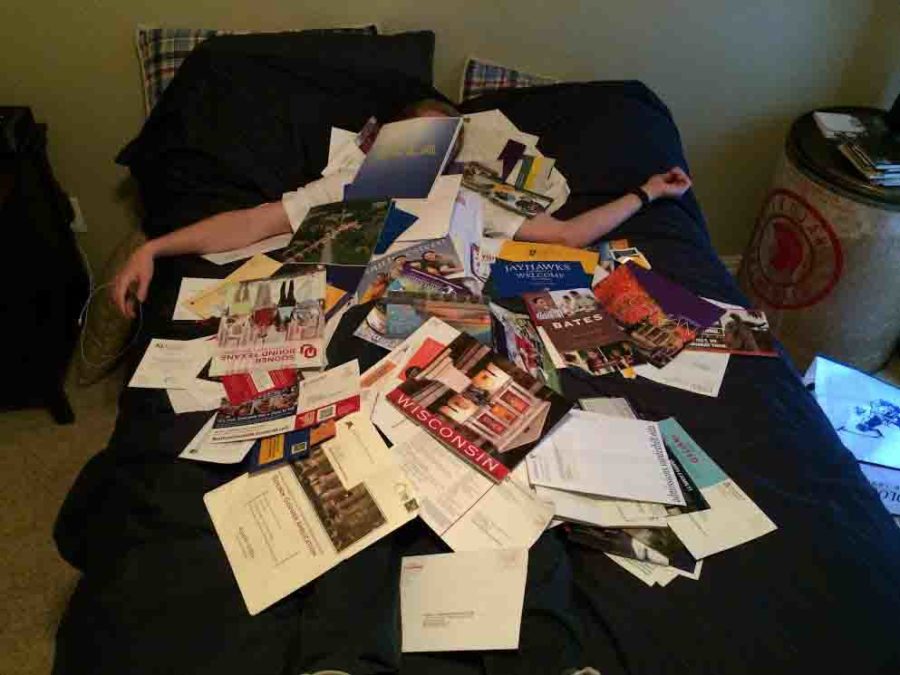Save the trees, stop the mail
Matt Smith, a senior, feels as though he is weighed down by a current influx in college ‘advertisements’.
October 14, 2014
College mail. High school students get a lot of it and it continues to flow in and out of our houses, finding every possible way to get into our lives. Their techniques seem desperate at times, and then other times, some of the mail seems generic. Some of the material is really interesting, yet some is marked by the safe marketing strategies of the school’s admissions office.
How many times have you come across a brochure from some school with a picture of their most photogenic students standing in front of the prettiest part of campus? How many times have you been bombarded by mail that tries to lie about how much of a perfect fit you are for their school? When does all this madness stop and why do they insist on keeping up with their bothersome ways?
I have been receiving mail from schools all over the United States since my freshman year of high school. I thought it would be completely harmless to allow schools to contact me in accordance with the scores I got on my PSAT. I soon found that I was wrong.
At first it was welcomed but then it took a turn for the worse. I still appreciate the recognition I am receiving with every letter, but now only the strongest survive and I have begun to question the effectiveness of some of the material on students in general.
My decision on college will not be dictated by the word I received via mail from the several different schools that found interest in me. I found out about the schools I applied to from putting in my own effort to scout out schools that met my own criteria. However, that information wasn’t always readily available. With my strange blend of activities and hobbies, I wanted to belong to a school that helped me embrace those interests without sacrificing any one of them.
I still do, and I applied to a series of schools that met my specific demands. That information was extracted from visits to the schools and extensive research that came from multiple sources. What if all the information that was especially important to me could be readily accessible via another source that didn’t take up time and money out of both party’s lives?
All my unwanted reading material has either found its way underneath my bed, stuffed in the trunk of my car, or decaying in the North Texas Municipal Water District Landfill.
It bothers me that alumni who donate a significant amount each year to their schools may not realize that their money is being put into sending out these short-lived mailers.
On a side note, these mailers are not a small commitment for every college sending them out. The production and the labor required in sending out even the emails costs significant amounts of money as well. Most times, colleges send out multiple variations of their brochures to ensure that they can get from the mailbox to the kitchen without being thrown away as a duplicate.
Marketing solutions are always changing as people adapt to a changing environment of public interest. The mailers that have been used to attract attention for students over the past couple decades have become obsolete and need a revival. If colleges want to appeal to all students they have to find a way to appeal to every individual teen with their own specific demands. For starters, personalized web-pages and Twitter mentions would be much more effective and probably less expensive. The college decision is a tough one, and colleges have the opportunity to interest prospective students in ways that have not been used before, making the choice an easier one for teens today.




